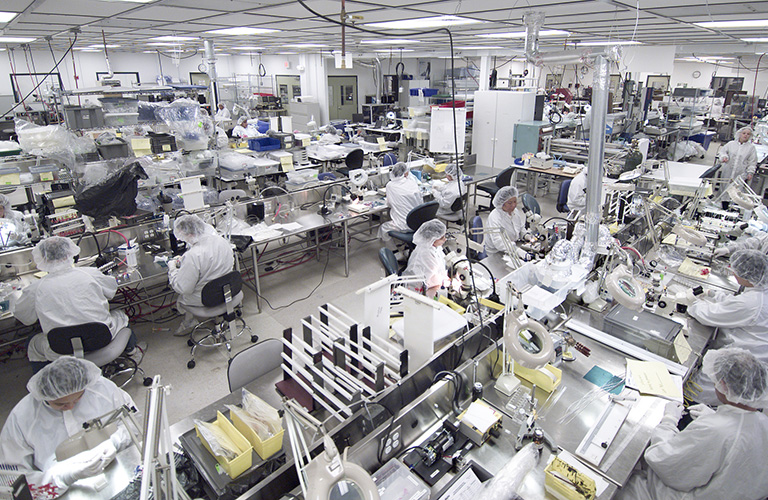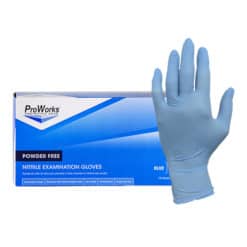Cleanroom News, General Topics
Disposable Glove Terms – Everything You Need To Know
Below is a list of commonly used disposable gloves terms. Disposable gloves are used for a variety of application in various industries including medical, industrial, cleanroom, laboratory, pharmaceutical, maintenance, janitorial, and general-purpose cleaning. They are available in multiple materials including latex gloves, vinyl gloves, and nitrile.
Absorbable Dusting Powder – A glove powder used to ease the donning of gloves. This powder is typically made of cornstarch.
Ambidextrous – Can be worn on either the left or right hand
Elongation – This is a measurement that determines how the glove can be stretched before breaking. The higher the percentage, the more a glove can be stretched. This is a good indicator of durability.
Examination Grade Gloves – These gloves need to meet certain specifications set forth by the FDA. To label a glove a “Medical Grade Exam Glove” the manufacturer needs to have a 510(K) device listing on file. In order to achieve this designation, the manufacturing facility and process must be regularly tested and inspected by the FDA to ensure quality is met and maintained. The facility typically requires an ISO certification as well.
Several requirements needed to meet the FDA’s “Medical Examination Glove” designation include:
- Examination Gloves must meet certain criteria of performance that is set by ASTM standard for Latex Examination Gloves to meet ASTM D3578
- The gloves shall comply with the dimension requirements prescribed in the standard
- Tensile Strength, 11 MPa, Min
- Ultimate Elongation, 300%, min
- The gloves also need to be tested for Freedom from Holes based on ASTM D5151 to be used as patient examination grade gloves and tested per sampling plan and quality levels
Federal Food, Drug, and Cosmetic Act (FFDCA)/21CFR – The FDA is responsible for regulating materials and substances that may be indirect food additives when coming into contact with food. For this reason, gloves are considered indirect food additives. The FDA regulations outlines which substances are acceptable components. They can be found in Title 21 of the Code of Federal Regulations, Part 174-178. Compliance is critical to glove manufacturers, as well as end-users that must also comply and use gloves that meet these regulations. The materials latex; nitrile butadiene rubber; Poly Vinyl Chloride and Polyethylene that are used to make disposable gloves are safe to be used as an indirect additive to come in contact with food.
Flocked Lining – Cotton fiber added to the inside of the glove intended to provide better comfort and to absorb perspiration
Gauntlet Cuffs – Safeguard for added forearm protection, measuring 4 ½ inches or more in length
Glove Thickness – (Measured in mil. 1 mil = 0.025 mm) The glove thickness varies from one area to the other. The thickest parts are at the tips of the fingers and the thinnest is at the cuff of the glove. The reason for this is because the glove hand former is dipped upside down in the filling tank. Thicker gloves may provide a better barrier of protection from chemicals but are not always an indicator of better quality. Tensile strength, elasticity, and dexterity should also be factored in when evaluating overall quality.
Keystone Thumbs – Most comfortable glove to wear; added flexibility provides excellent wear resistance
Knit Wrist – Helps prevent debris from entering at the wrist and holds the glove secure to the wrist
Leaching – During the manufacturing process, excess chemicals and other particulate is washed off the glove. This process is called leaching
Modulus – An indicator of stretch and flex. A lower modulus glove indicates ease of stretch and flex
Non-Sterile – This type of glove is not subjected to gamma irradiation that kills micro-organisms
Not for Medical Use/Industrial Grade/Disposable/General Purpose Gloves – Gloves with these designations are typically used in the following applications: Food handling, salons/spas, electronic assemblies, laboratories, and packing process, automotive, janitorial, general pharmaceutical, and home use. These gloves are not recommended for medical use or patient examination, especially to prevent the transmission of organisms or blood-borne pathogens.
Permeation – Movement of substances through a thin film, such as a glove, on a molecular level
Powder – Powder is sometimes used to help make donning easier. The powder is typically comprised of cornstarch. Disposable gloves (particularly latex) can have a sticky surface – this can be troublesome, especially in a wet environment. One disadvantage of powdered gloves is the powder can contaminate the environment. Furthermore, some people are allergic to the powder.
Powder-Free – Gloves made without powder through the chlorination or polymer coating processes. During these processes, the latex protein content is removed. These are a good option for those with latex sensitivity.
Rolled Cuffs – Provides strength in donning and helps prevent tearing
Straight Thumbs – Construction of glove provides a closed thumb gripping position for comfort and durability
Tensile Strength – The measurement of the amount of force it takes to pull a glove to the breaking point is called tensile strength. It is expressed as MPA – the higher the number the stronger the glove.








